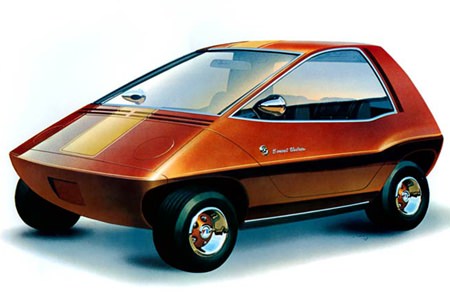The term “KERS” is bandied around a lot these days, but most people do not really understand what it is. KERS stands for Kinetic Energy Recovery Systems, and although it does deliver power, it certainly is not “free”. In fact, quite the opposite. If energy from KERS were really “free” then perpetual motion would be possible. And let me assure you, it isn’t.
A regenerative brake is a mechanism that reduces vehicle speed by converting some of its kinetic energy into another useful form of energy. This captured energy is then stored for future use or fed back into a power system.
 AMC Amitron.
AMC Amitron.
For example, electrical regenerative brakes in electric railway vehicles feed the generated electricity back into the supply system. In battery electric and hybrid electric vehicles, the energy is stored in a battery or bank of capacitors for later use. Other forms of energy storage which may be used include compressed air and flywheels.
An early example of this system was the Energy Regeneration Brake, developed in 1967 for the AMC Amitron. This was a completely battery powered urban concept car whose batteries were recharged by regenerative braking, thus increasing the range of the automobile.
Formula 1 could have had KERS a decade earlier as Mario Illien created a system for Mercedes in 1999 that used hydraulic fluid pressure to recover energy lost in braking. It would have provided a 45 bhp power boost for four seconds but could have been used many times per lap, but the FIA outlawed the system before it could be raced, not wanting to allow cars to get any faster.




